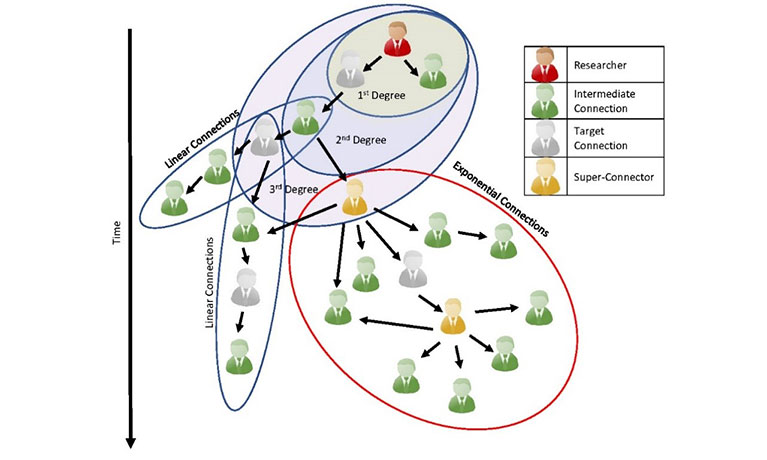By Paul Noon
Business researchers face increasing difficulties in engaging with business people to undertake survey-based research. People are busy, have been surveyed out, and just do not want to engage. This was my experience of doing a PhD; sending out hundreds of emails, chasing down web-based contacts; hours of fruitless work put my PhD in jeopardy.
Despairing, I reverted to the literature on how to identify and persuade survey participants. The literature was rich and varied but focussed on mail and telephone surveys. Web-based surveys were less well covered and focussed mainly on using the web to send blind surveys to massive populations where the quality of respondent could not be assured. While full of useful information, this was not an option for me where I wanted to survey, and interview elite (C-Suite) business people about their business decisions.

LinkedIn came to my rescue. With 722 million members in 200 countries and regions worldwide, LinkedIn is the premier social network for business people and proved to be a vital tool.
Drawing on the literature but making the most use of this new tool I was able to secure participation in a survey of 464 c-suite executives, with 207 completing the survey an overall response rate of 44%.
7 ways in which you can use LinkedIn to approach and persuade participation in research surveys:
Build your profile – it is important for researchers to have a profile, to establish legitimacy and to start the process of communicating with potential participants. Update your picture and background, ensure your CV is up to date. Start commenting on posts in the areas you are interested in. Approach some key people and ask them to connect with you. Be friendly, be professional.
Find your targets – use LinkedIn’s search functions to identify people you might want to contact. Take notice of people who pop up in searches regularly (see below). Start the process of reaching out, each time you connect, you will be closer to your target audience.
Establish yourself – if you are looking to research a particular sector or type of activity, engage with groups that cover these topics. Write a short post in the area, get involved in discussions. One day you will wake up and find a handful of requests to join your network, you are now getting established.
Find the super-connectors – Within most communities, whether HR professionals, CEOs, or sectors, there will be a group of people that are highly active. They may be the head of an industry group, perhaps a union head, or an industry journalist. You are looking for those people that large numbers of your target audience might be connected to. These are the super-connectors, the hub airports of social networks, connect with them, and you will suddenly be much closer to having access to your target audience.

Approach with caution – your target participant, is likely to be busy, they will probably receive a large number of requests through their LinkedIn mailbox, often trying to sell them goods and services. So, when you get to the point of approaching them to take part in your survey, be careful. Be professional, explain the purpose of your research, ask them for their help (it is much harder to say no if you do this). Let them know about the scale of commitment in helping you, and the benefits to them and society of engaging. You are trying to minimise the pain and maximise the gain – this will also feed into your survey design – keep it short and sharp and interesting. Let them know how to engage and if appropriate, assure the anonymity of the participant and their business. Say, thank you.
Push, but not too hard– If you do not get an immediate response, perhaps send a reminder. But do not push too hard you don’t want to burn your reputation, and too many complaints could lead to a ban on LinkedIn.
Not just for attraction – once you have built a profile and established your credibility on LinkedIn do not toss it away. Use it as a conduit for impact, get your research out there. Your participants will be interested in the outcomes of your research, show your gratitude to them through sharing it with them. They may be your next employer.
LinkedIn saved my research; it enriched it and gave me access to a vast population of normally difficult to reach executives. I hope it can help you too.




Comments are disabled